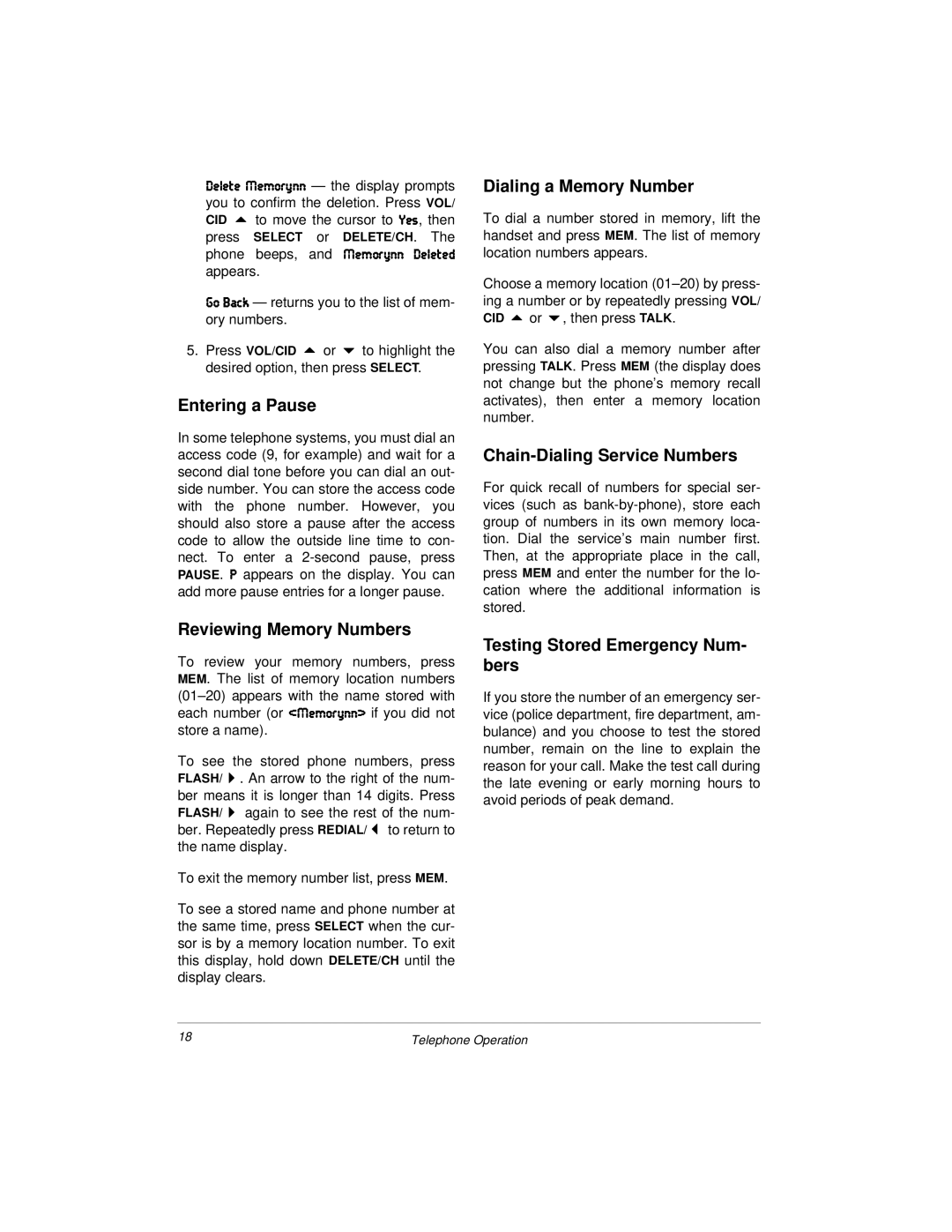:[b[j[ýC[cehodd — the display prompts you to confirm the deletion. Press VOL/ CID 8 to move the cursor to O[i, then
press SELECT or DELETE/CH. The phone beeps, and C[cehoddý :[b[j[Z appears.
=eý8WYa — returns you to the list of mem- ory numbers.
5.Press VOL/CID 8 or 9 to highlight the desired option, then press SELECT.
Entering a Pause
In some telephone systems, you must dial an access code (9, for example) and wait for a second dial tone before you can dial an out- side number. You can store the access code with the phone number. However, you should also store a pause after the access code to allow the outside line time to con- nect. To enter a
Reviewing Memory Numbers
To review your memory numbers, press MEM. The list of memory location numbers
To see the stored phone numbers, press FLASH/7. An arrow to the right of the num- ber means it is longer than 14 digits. Press FLASH/7 again to see the rest of the num- ber. Repeatedly press REDIAL/6 to return to the name display.
To exit the memory number list, press MEM.
To see a stored name and phone number at the same time, press SELECT when the cur- sor is by a memory location number. To exit this display, hold down DELETE/CH until the display clears.
Dialing a Memory Number
To dial a number stored in memory, lift the handset and press MEM. The list of memory location numbers appears.
Choose a memory location
You can also dial a memory number after pressing TALK. Press MEM (the display does not change but the phone’s memory recall activates), then enter a memory location number.
Chain-Dialing Service Numbers
For quick recall of numbers for special ser- vices (such as
Testing Stored Emergency Num- bers
If you store the number of an emergency ser- vice (police department, fire department, am- bulance) and you choose to test the stored number, remain on the line to explain the reason for your call. Make the test call during the late evening or early morning hours to avoid periods of peak demand.
18 | Telephone Operation |
